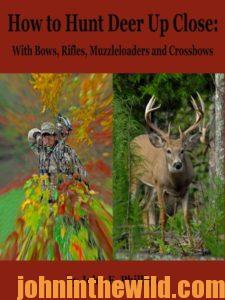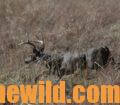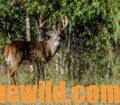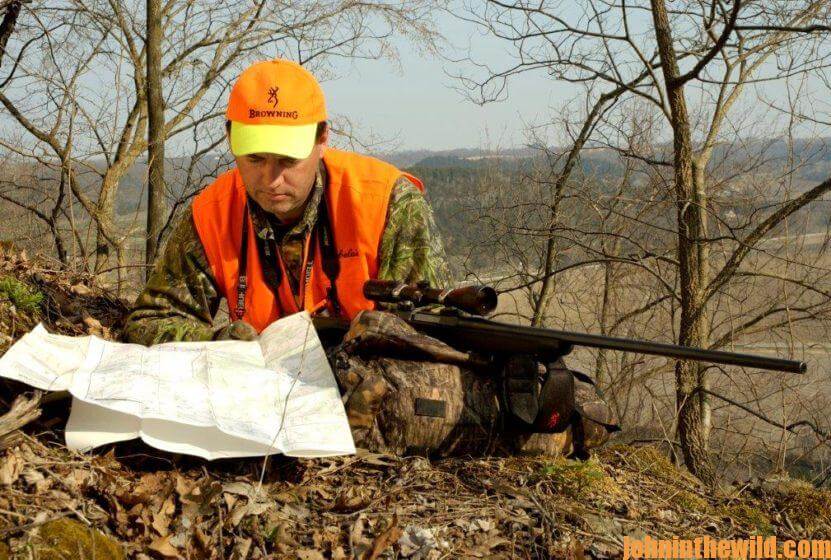Editor’s Note: During the last couple of weeks of deer season, if you haven’t taken your buck, what can you do to insure your success? How can you bag the biggest buck of the season? At this time of the year, the older bucks know more about what you’ll do than you do. To take them, you must do the unexpected.
 If you hunt in mountainous terrain that has briar or brush thickets at the base of a mountain and numerous finger ridges running off the mountain, you can use the can-of-rocks strategy to spook big bucks into open cover. One hunter walks the top of the mountain, while the other hunter moves in the valley below. When you see a finger ridge coming off the main mountain with a thicket at the base of the mountain where the finger ridge joins the mountain, roll a can of rocks down the mountain and into the thicket. The deer holed-up in the thicket probably never before have heard a can of rocks coming toward them. They’ll have to get up and either run up the side of the finger ridge or more than likely, they’ll run out through the valley where a stander waits. When deer hole-up in thickets you know you can’t penetrate, use some unusual sound or offensive scent, like human odor, to travel through that thicket to spook the bucks out.
If you hunt in mountainous terrain that has briar or brush thickets at the base of a mountain and numerous finger ridges running off the mountain, you can use the can-of-rocks strategy to spook big bucks into open cover. One hunter walks the top of the mountain, while the other hunter moves in the valley below. When you see a finger ridge coming off the main mountain with a thicket at the base of the mountain where the finger ridge joins the mountain, roll a can of rocks down the mountain and into the thicket. The deer holed-up in the thicket probably never before have heard a can of rocks coming toward them. They’ll have to get up and either run up the side of the finger ridge or more than likely, they’ll run out through the valley where a stander waits. When deer hole-up in thickets you know you can’t penetrate, use some unusual sound or offensive scent, like human odor, to travel through that thicket to spook the bucks out.
 Navigate the Dark:
Navigate the Dark:
Ninety-eight percent of the sportsmen who go into the woods each season to take deer don’t like to walk in the woods before daylight or after dark. If they do go into the woods at those times, they’ll usually carry flashlights and walk quickly to their stand sites. However, flashlights and fast walking often spook the deer they hope to hunt. Instead, at the end of the season, go into the woods an hour or two before daylight. Use a GPS receiver with a backlight, preferably with a red screen, to navigate to your stand site. Don’t use a flashlight. Take two steps forward, and stop. Then take one step forward, and stop. Break-up your walking rhythm to sound more like an animal grazing than a hunter walking to his stand. Take plenty of time to reach your stand site deep in the woods. Have your stand near a bedding area or an escape route the bucks will use to get away from hunters as they enter the woods at daylight.
 Or, to hunt deer successfully in the late afternoon, climb early into your stand situated deep in the woods, well-away from other hunters and close to a bedding region. Determine to remain in your stand until you no longer can see through your rifle scope. Most hunters want to leave their stands with enough daylight to see how to return to their vehicles. Often you’ll find the deer the most active and 90 percent of the hunters out of the woods those last 2 minutes of shooting light. If you decide to stay on your stand until pitch-black dark and utilize your GPS to leave the woods, you’ll drastically increase your odds for bagging a buck at the end of the season that no other hunter has seen.
Or, to hunt deer successfully in the late afternoon, climb early into your stand situated deep in the woods, well-away from other hunters and close to a bedding region. Determine to remain in your stand until you no longer can see through your rifle scope. Most hunters want to leave their stands with enough daylight to see how to return to their vehicles. Often you’ll find the deer the most active and 90 percent of the hunters out of the woods those last 2 minutes of shooting light. If you decide to stay on your stand until pitch-black dark and utilize your GPS to leave the woods, you’ll drastically increase your odds for bagging a buck at the end of the season that no other hunter has seen.
 To learn more about hunting deer, check out John E. Phillips’ book, available in Kindle, print and Audible versions, “How to Hunt Deer Up Close: With Bows, Rifles, Muzzleloaders and Crossbows” (http://amzn.to/11dJRu8). You may have to copy and paste this link into your browser. (When you click on this book, notice on the left where Amazon says you can read 10% of the book for free, and you can listen to 10% for free and hear 10% for free).
To learn more about hunting deer, check out John E. Phillips’ book, available in Kindle, print and Audible versions, “How to Hunt Deer Up Close: With Bows, Rifles, Muzzleloaders and Crossbows” (http://amzn.to/11dJRu8). You may have to copy and paste this link into your browser. (When you click on this book, notice on the left where Amazon says you can read 10% of the book for free, and you can listen to 10% for free and hear 10% for free).
Tomorrow: Hunting the Slack Times and Out-Hunting the Green Field Hunters in January for Deer










